Backpacking food is one of the most important elements of a trek. And this delicious backpacking meal of Persian beef kebab and saffron rice is not your ordinary dehydrated food.

I really do love being outdoors and enjoying our adventures out in nature. Unfortunately, my allergies do not like to cooperate and no amount of allergy meds is enough to battle my body’s aversion to grass and pollen.
My family has been active in scouting for over a decade. All three of my kids joined scouting and partake in many, many camping trips – as a family as well as with our scouting family.
To say that we like to eat well is also an understatement. Don’t get me wrong, pizza and burgers are awesome, but we don’t like eating junk food everyday. Not only did I revamp our meals during scout campouts, I also wrote and photographed a camping cookbook.
I envy those who have the enthusiasm and energy to go backpacking. The things you get to see when you are away from it all is breath taking. But, alas, I am no high adventure trekker. But I sure know how cook.

Why you should try this recipe
Both of my boys were able to go to Philmont during their time as a Boy Scout. They came back 5-10 pounds lighter not because of the extensive physical exertion, but because of the food! Spam and tuna pouches only go so far with teenagers.
I learned a few keys to preparing and planning for backpacking food. It needs to be light weight, jam packed with calories and of course, non-perishable. Mountain house meals are hearty, but they can be expensive, especially if you are planning a 1-week trip.
Since we are Persian and love Persian food, my family loves the ground beef kebab jerky we made (inspired by a real koobideh kebab dinner), so why not use it as a meal? Dried meats are a great source of protein and energy for campers and backpackers. And you don’t have to it eat it alone.
We tested this meal out at home and the kids agreed that it tasted like a real Persian kabob dinner. So why not take it to the trail?
This meal can made for one serving or upscale it for a group. My husband and his buddies loved this dish and have added it to their backpacking arsenal of recipes. You do need to prepare the ground beef jerky ahead of time, but it is totally worth it.

Ingredients you need

This post contains some affiliate links for your convenience (which means if you make a purchase after clicking a link I will earn a small commission but it won’t cost you a penny more)! Read my full disclosure policy
- Ground beef (kebab koobideh) jerky: My recipe for ground beef kebab jerky tastes just like Persian koobideh kebab. We use this as our base meat for this dish. Ground beef jerky is also less expensive than it’s steak jerky counterpart.
- Instant rice: You can use Minute Rice or Uncle Ben’s or any other instant rice. My husband, being Persian, wanted basmati rice, so we found Ben’s Ready Rice basmati rice pictured above as well as Tasty Rice. Both are pre-cooked then vacuum packed and do not require much water to rehydrate and cook. They are heavier than a box of Minute Rice and each pouch makes a hearty one serving.
- Dehydrated tomatoes: If you have ever eaten the real kabob meal then you know it is typically served with grilled tomatoes. You can dehydrate your own tomatoes or purchase already dehydrated tomatoes.
- Ground saffron: Persian rice wouldn’t be Persian rice without saffron. Grind the threads at home and take a small pouch with you for easy use.
- Salt: We found the rice to be rather bland, so add a dash of salt if you need it.
- Sumac: Ground sumac is always sprinkled over Persian kebab and rice. It is a little tart and full of flavor. A small way to add zing to your meal.
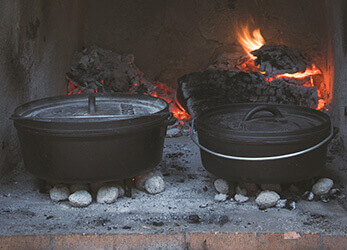
Tools to Use
Step-by-step directions
1. Cut or tear ground beef jerky into 1-inch pieces and add to a pot. Cover with water and heat for 5 minutes to rehydrate meat to personal preference. Strain meat and use water to cook the rice, if needed.
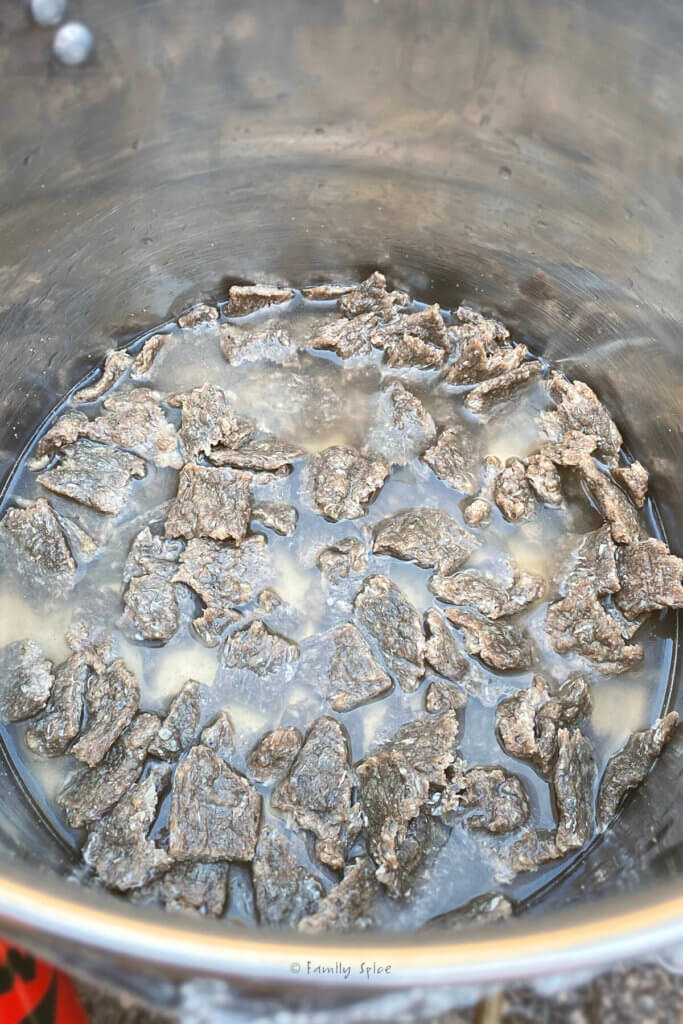
2. If using instant rice that needs to cook in water, cook per package directions. If using rice like what is pictured in this post, already cooked and vacuum packed, no water will be needed to rehydrate. Again follow, your package directions.
3. Add salt and saffron to rice while it reheats. If using dehydrated tomatoes, add them to the rice. Stir in meat with the rice and season with sumac.
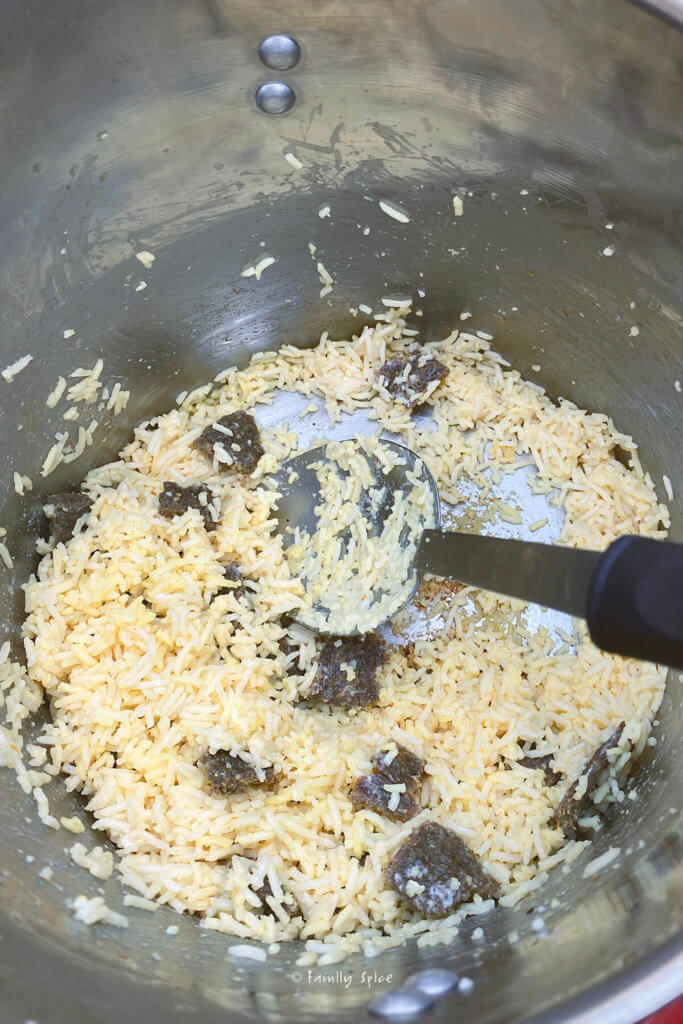
4. If you are carrying fresh tomatoes and cucumbers, you can make a shirazi salad. For my husband and his crew, this was their first meal on their trek so they took along fresh veggies.
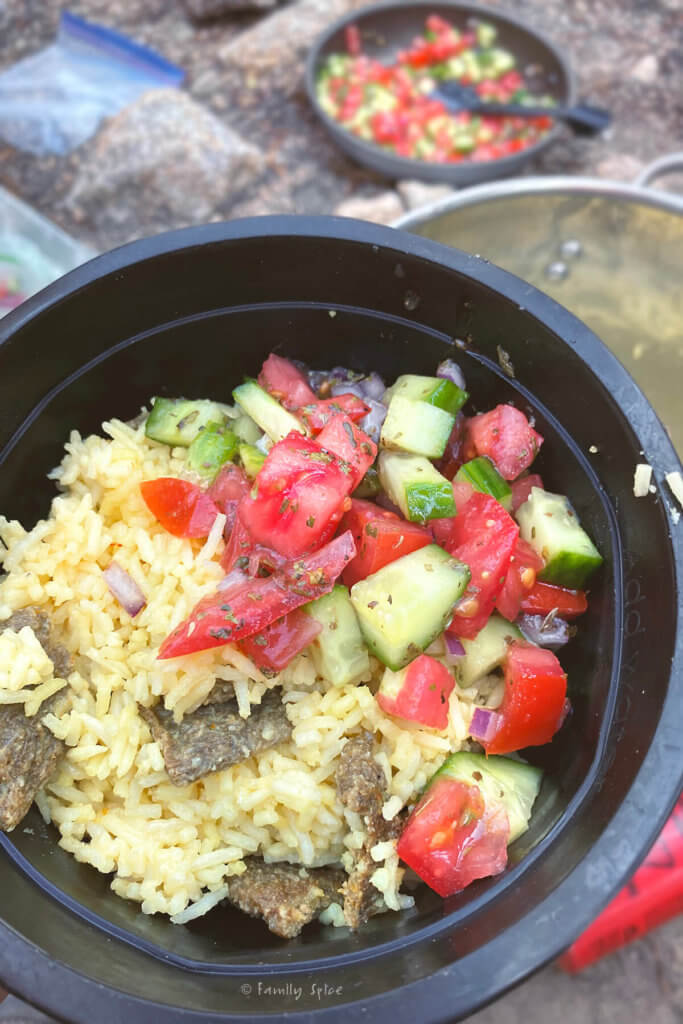
Recipe tips and FAQs
Here in California you can find herbs growing in the wild. Foraging for food does take some education, so don’t go sampling unknown vegetation. Onions and chives bloom their iconic purple puff ball flowers, and of course smell like onions, too.
You can also find sag growing rampant here in SoCal. You can kick up the flavor in any kind of backpacking meal with the addition of fresh herbs.
I don’t usually write about backpacking food, so this post is little of an experiment for this blog. If you want to see more gourmet foods you can pack and eat on a trek, let me know.
Remember, if you do this a lot, invest in a food dehydrator. You eat a lot healthier and tastier meals if you prepare them yourselves. This is true on the trail and at home.
The money you spend on a dehydrator will save you in the long run from all the expensive pouches of dried meats and meals you would normally be purchasing. We purchased one on Craigslist and use it for a number of different foods.
Stay safe on the trek and happy trails, my friends!

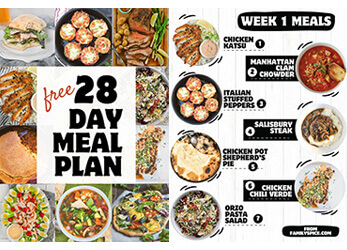
If you are enjoying my recipes, please sign up for my newsletter and get my free 28-day meal plan! You can also follow me on Instagram or Facebook.
PS If you try this recipe, why not leave a star rating in the recipe card right below and/or a review in the comment section further down the page? I always appreciate your feedback.
You can also follow me on Pinterest, Facebook or Instagram. Sign up for my eMail list, too!
Backpacking Meal: Persian Beef Kebab and Rice
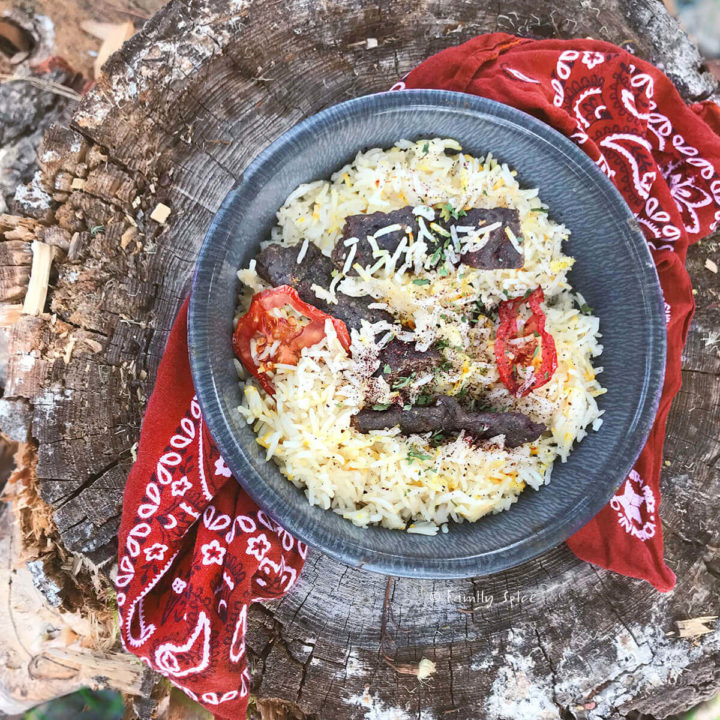
Backpacking food is one of the most important elements of a trek. And this delicious backpacking meal of Persian beef kebab and saffron rice is not your ordinary dehydrated food.
Ingredients
- 2 1-foot strips of ground beef kebab jerky
- 8.5 oz instant basmati rice
- 3-4 slices of dehydrated tomatoes
- ⅛ teaspoon ground saffron
- ⅛ teaspoon sea salt
- ½ teaspoon sumac
- Water
Instructions
- Cut or tear jerky into 1-inch pieces and add to a pot. Cover with water and heat for 5 minutes to rehydrate meat to personal preference. Strain meat and use water to cook the rice, if needed.
- If using instant rice that needs to cook in water, cook per package directions. If using rice like what is pictured in this post, already cooked and vacuum packed, no water will be needed to rehydrate. Again follow, your package directions.
- Add salt and saffron to rice while it reheats. If using dehydrated tomatoes, add them to the rice.
- Stir in meat with the rice and season with sumac.
Notes
Top with fresh/dried parsley or mint. If you can find wild onions, chop and add to the meal, as well.
Nutrition Information:
Yield:
1Serving Size:
1Amount Per Serving: Calories: 942Total Fat: 28gSaturated Fat: 10gTrans Fat: 1gUnsaturated Fat: 13gCholesterol: 147mgSodium: 1613mgCarbohydrates: 109gFiber: 5gSugar: 31gProtein: 60g

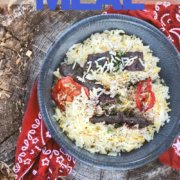
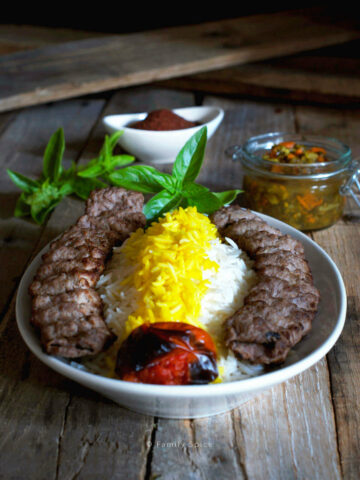
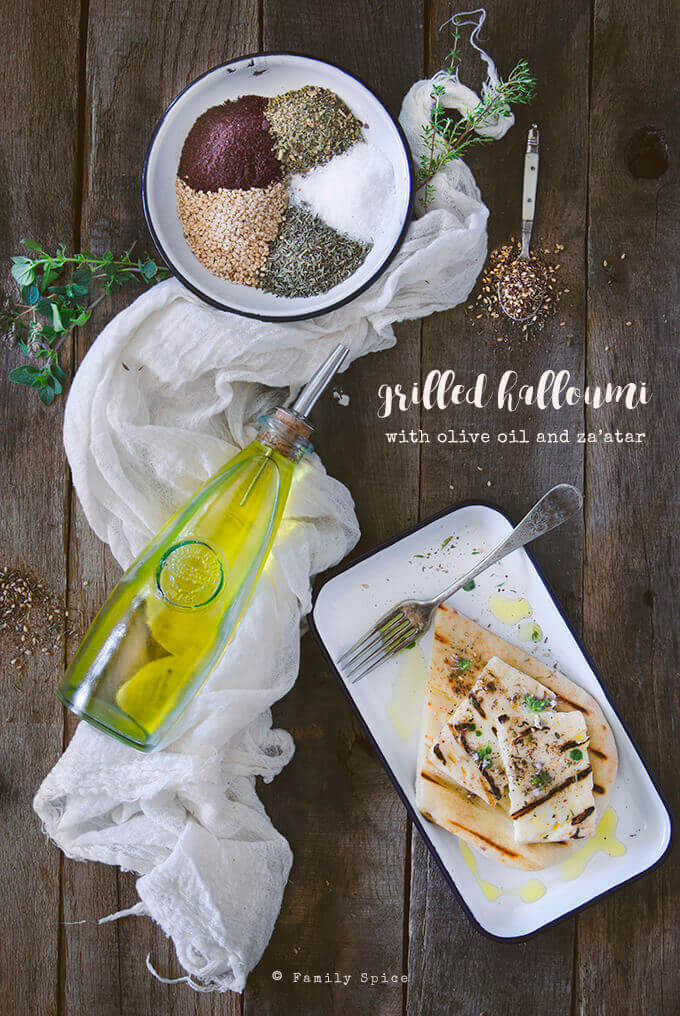

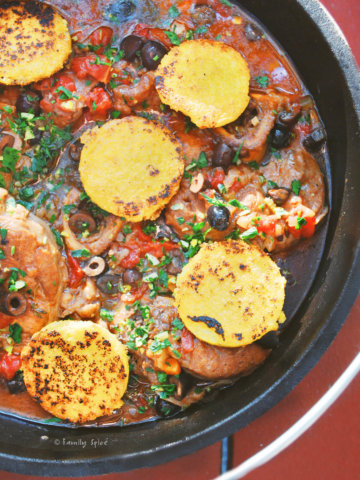




Wow, what an awesome post! This is a really, really ingenious recipe — you’ve made a traditional dish that doesn’t really seem all that appropriate for camping, into something that totally works. Kudos!